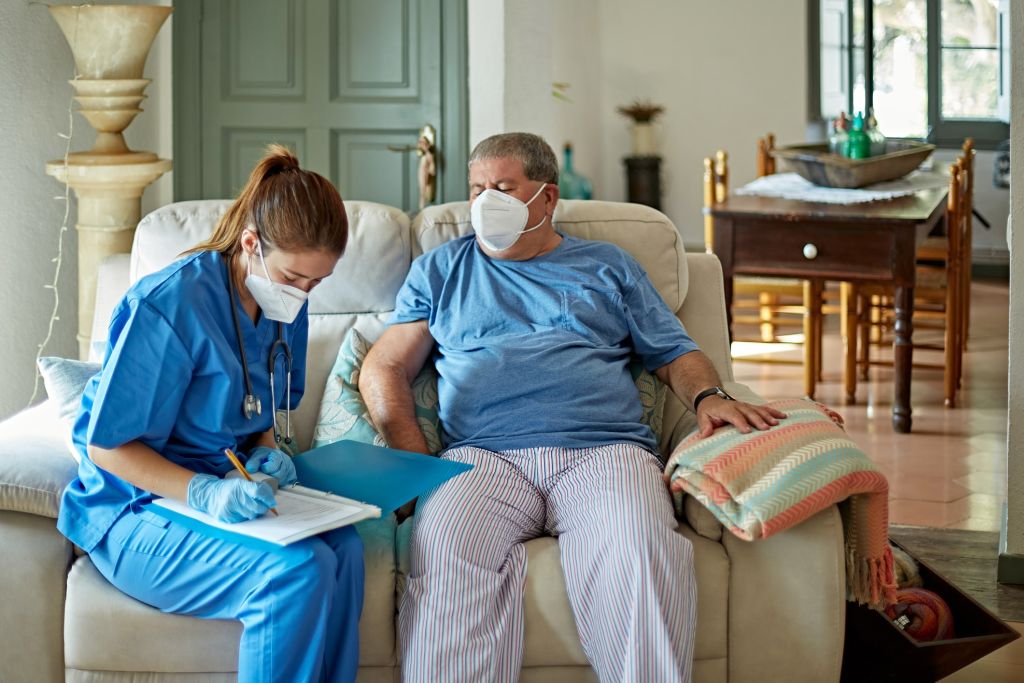The concept of home medical care has become increasingly popular in recent years, offering a more comfortable and personalized approach to treatment. For seniors, caregivers, and healthcare professionals working outside hospital settings, understanding how to administer safe medical care at home is essential. From managing medications to sourcing essentials like bacteriostatic water, this guide offers insights to simplify and improve your home care practices.
By the end of this post, you’ll have a firm grasp of the best practices for administering safe medical treatments at home, as well as a deeper understanding of the importance of maintaining proper hygiene and choosing high-quality medical supplies.
The Growing Need for Safe Medical Care at Home
For many, receiving care at home means access to faster, more customized treatment in a familiar environment. This shift has been influenced by aging populations, rising healthcare costs, and technological advancements, enabling treatments that once required clinic visits to now be conducted at home. For seniors, having medical interventions at home reduces the stress of frequent hospital trips. For caregivers, it provides a level of convenience and reassurance. And for healthcare professionals, ensuring that individuals receive effective and safe care in their homes is a crucial part of extending medical services beyond hospital walls.
However, providing medical care at home comes with its own challenges. Maintaining sterility, following treatment protocols, and sourcing high-quality products like bacteriostatic water can seem overwhelming. But understanding these steps is vital for ensuring patient safety and preventing complications.
Why Sterility is Crucial in Home Medical Care
One key aspect of home medical care is maintaining sterility during any procedure to minimize the risk of infections. Unlike the controlled settings of hospitals or clinics, homes are filled with potential contaminants. Sterility ensures that bacteria, viruses, and other pathogens are kept out during invasive procedures such as injections, wound care, or catheter management.
For example, when you administer injections, using cleaned and sterile materials is non-negotiable. Tools like single-use syringes and bacteriostatic water—treated to inhibit the growth of bacteria—play a vital role in ensuring safety. By sourcing reliable medical-grade products, you create a safer environment for treatments.

What is Bacteriostatic Water, and Why is it Essential?
Bacteriostatic water is a sterile solution often used for injections or dilutions in medical treatments. It’s called “bacteriostatic” because its formulation includes a small amount of benzyl alcohol, which suppresses bacterial growth during use. Unlike regular sterile water, bacteriostatic water can remain uncontaminated for extended periods when used properly, making it highly practical for multiple-dose vials.
For healthcare professionals and caregivers at home, choosing to buy bacteriostatic water has several advantages. It ensures medications that require dilution are prepared safely and supports the proper administration of treatments, such as injections for hormone therapy, vitamin supplementation, or specific chronic illnesses.
When sourcing bacteriostatic water, be sure to buy from reputable suppliers that comply with the appropriate medical regulations. Make this a standard practice in ensuring the sterility and effectiveness of any home medical intervention.
Medications and Proper Handling at Home
Managing medications is a central part of home medical care. Whether it’s administering saline drips, delivering insulin injections, or preparing diluted antibiotics, caregivers should be well-trained in proper handling techniques. Proper storage is equally vital—medications sensitive to temperature should be kept in controlled environments, while sterile solutions must remain sealed until ready for use.
When using products like bacteriostatic water, always read accompanying instructions thoroughly. Mix medications using clean hands and sterile tools, and never reuse syringes. Additionally, it’s important to discard supplies properly to avoid any risk of cross-contamination or accidental needle sticks.
Planning ahead is another strategy that can simplify safe medical care at home. Create a checklist of everything you need for each procedure, from alcohol swabs to syringes and sterile solutions. This will prevent last-minute scrambling and lower the likelihood of errors.
The Role of High-Quality Supplies in Home Medical Care
Supplies make all the difference in maintaining safety during home treatments. While cost is often a concern, skimping on quality can lead to severe complications, such as infections or treatment errors. When it comes to sterile solutions and medical aids, reliability is key.
Choosing to buy bacteriostatic water and sterile equipment from trusted companies ensures you’re working with products designed for medical-grade treatments. When shopping, search for FDA-approved or equivalent certifications to confirm you’re purchasing from reputable suppliers. Keep an inventory of the most commonly used products to ensure continuous availability without rushing to find replacements during critical moments.
Making Safe Medical Care at Home Simpler and Accessible
Managing medical care at home doesn’t need to feel intimidating. By focusing on sterility, using trusted supplies like bacteriostatic water, and staying educated, you can create a safer and more efficient environment for caregiving. Remember, every patient scenario is unique, so be sure to consult healthcare providers for guidance specific to individual needs.
For those starting their home care journeys, take that first step today by reviewing your current setup and identifying gaps in knowledge or supplies. A little preparation goes a long way in creating a safe and stress-free experience for both caregivers and patients.

